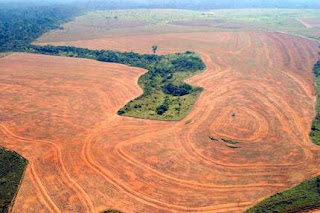Environmental engineering is the application of science and engineering principles to improve the environment (air, water, and/or land resources), to provide healthy water, air, and land for human habitation and for other organisms, and to remediate polluted sites.
Environmental engineering involves water and air pollution control, recycling, waste disposal, and public health issues as well as a knowledge of environmental engineering law. It also includes studies on the environmental impact of proposed construction projects.
Environmental engineers conduct hazardous-waste management studies to evaluate the significance of such hazards, advise on treatment and containment, and develop regulations to prevent mishaps. Environmental engineers also design municipal water supply and industrial wastewater treatment systems as well as address local and worldwide environmental issues such as the effects of acid rain, global warming, ozone depletion, water pollution and air pollution from automobile exhausts and industrial sources.At many universities, Environmental Engineering programs follow either the Department of Civil Engineering or The Department of Chemical Engineering at Engineering faculties. Environmental "civil" engineers focus on hydrology, water resources management,bioremediation, and water treatment plant design. Environmental "chemical" engineers, on the other hand, focus on environmental chemistry, advanced air and water treatment technologies and separation processes.
Pollutants may be chemical, biological, thermal, radioactive, or even mechanical. Environmental engineering is a diverse field, which emphasizes several areas: process engineering, environmental chemistry, water and sewage treatment (sanitary engineering), waste reduction/management, and pollution prevention/cleanup.
Environmental engineering involves water and air pollution control, recycling, waste disposal, and public health issues as well as a knowledge of environmental engineering law. It also includes studies on the environmental impact of proposed construction projects.
Environmental engineers conduct hazardous-waste management studies to evaluate the significance of such hazards, advise on treatment and containment, and develop regulations to prevent mishaps. Environmental engineers also design municipal water supply and industrial wastewater treatment systems as well as address local and worldwide environmental issues such as the effects of acid rain, global warming, ozone depletion, water pollution and air pollution from automobile exhausts and industrial sources.At many universities, Environmental Engineering programs follow either the Department of Civil Engineering or The Department of Chemical Engineering at Engineering faculties. Environmental "civil" engineers focus on hydrology, water resources management,bioremediation, and water treatment plant design. Environmental "chemical" engineers, on the other hand, focus on environmental chemistry, advanced air and water treatment technologies and separation processes.
Pollutants may be chemical, biological, thermal, radioactive, or even mechanical. Environmental engineering is a diverse field, which emphasizes several areas: process engineering, environmental chemistry, water and sewage treatment (sanitary engineering), waste reduction/management, and pollution prevention/cleanup.


